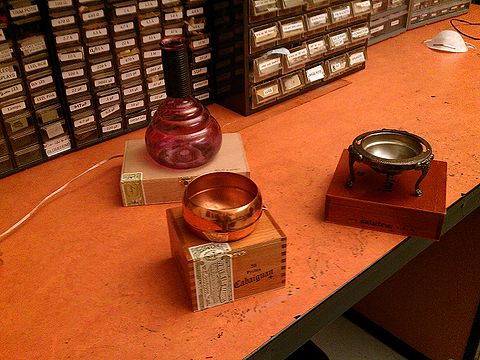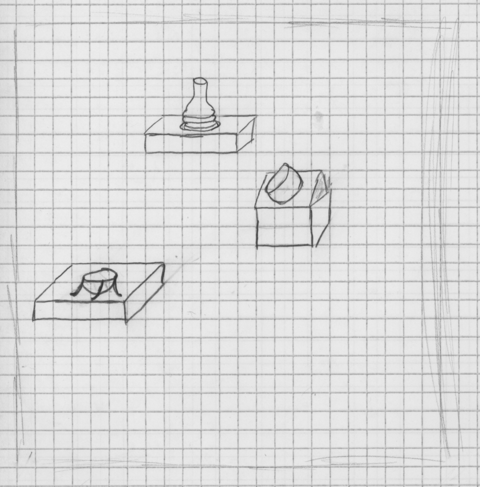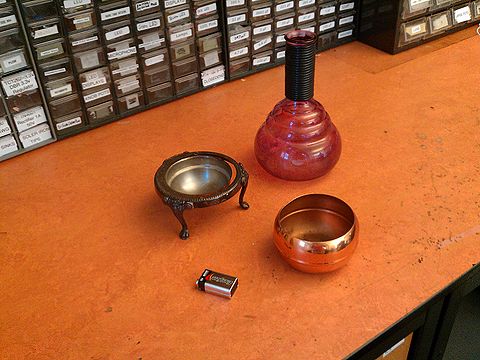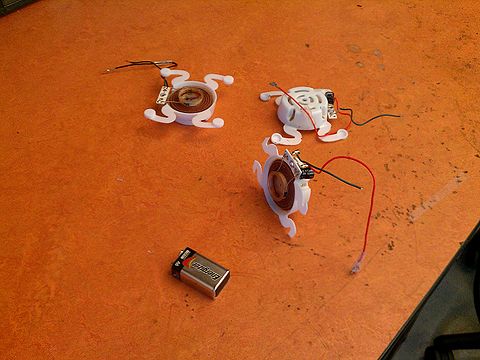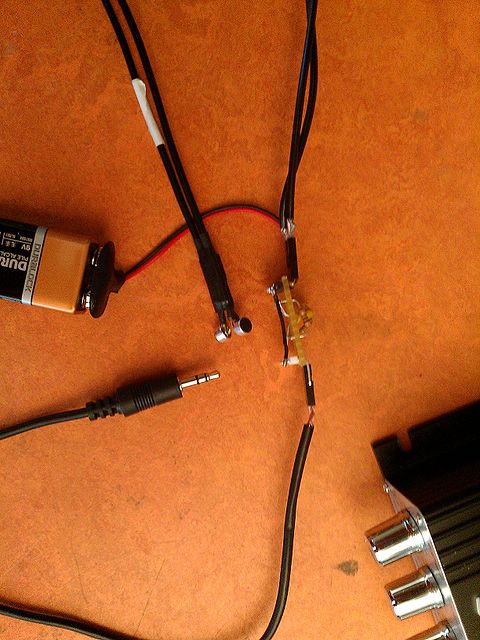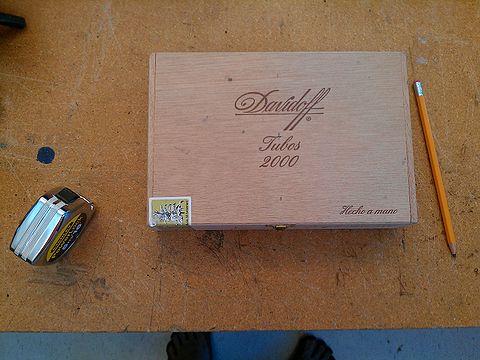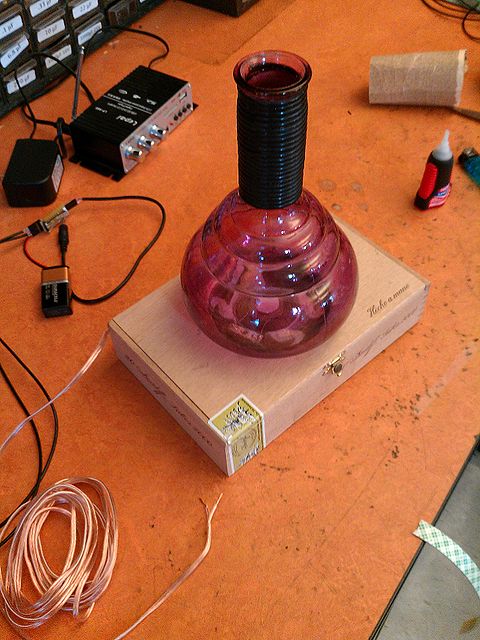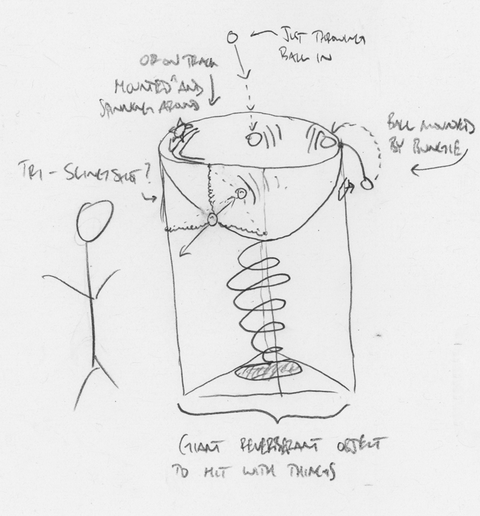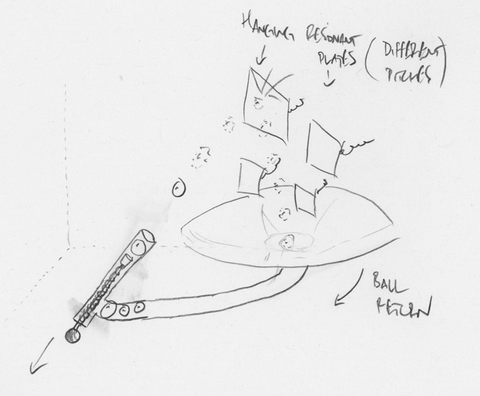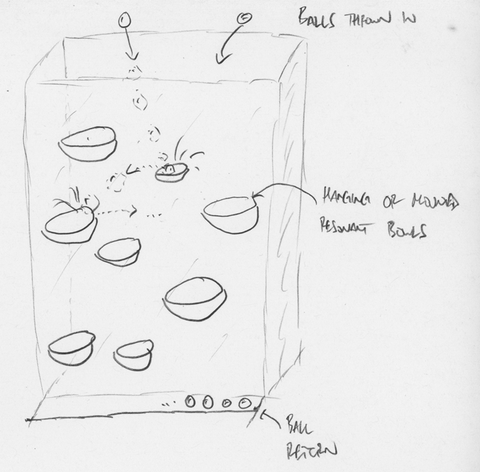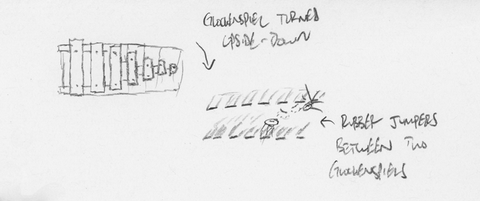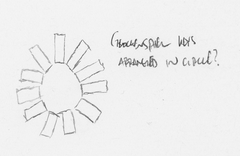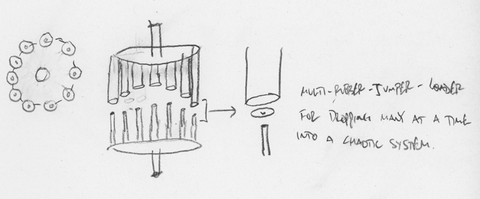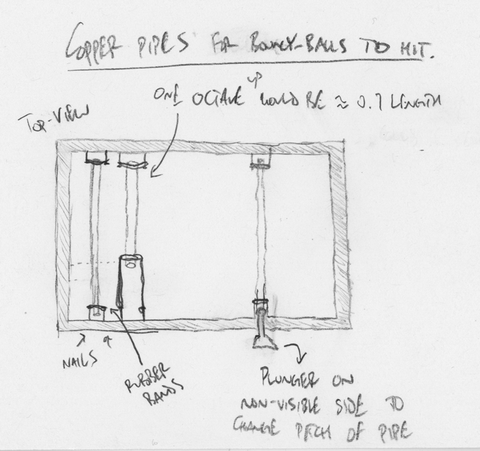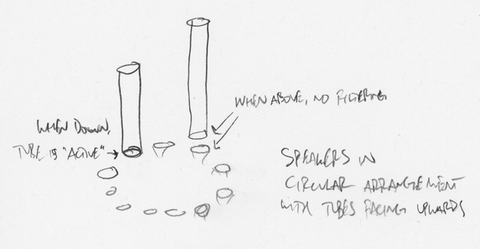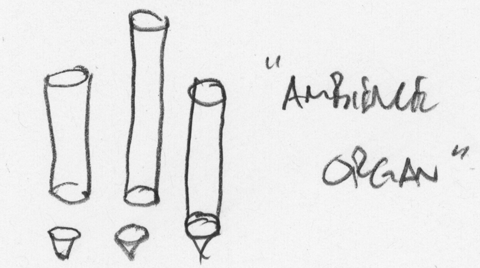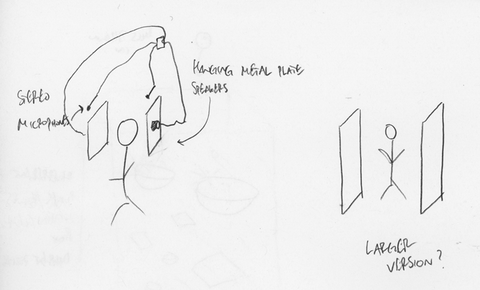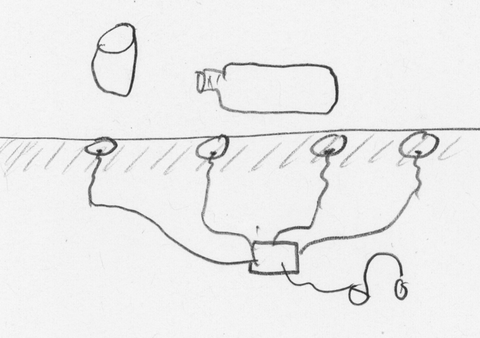Colin Sullivan 250b
Contents
now in three
Our surroundings bombard us with a variety of auditory stimuli each day. Many of us do not take notice of the sounds passing through our life.
now in three allows us to actively observe the sounds of our environment through three different "lenses".
The ambient sound of the space is amplified through each object, imprinting each object's characteristics onto the sound.
Setup and Lighting
The piece should be mounted on a wall, with each shelf staggered horizontally and on a different level vertically.
The installation could be lit with spotlights, but I would like to experiment with small LED lights on the back or underneath the shelves. The lighting should be warm and not dramatic.
Technology Setup
The microphone should hang in the room fairly distant from the installation to avoid feedback. Although feedback will not be a serious issue because the microcontroller is limiting the input signal.
The microphone plugs into the "audio in" of the beagle board. The audio out of the beagle board is connected to the audio amplifier which powers all of the speakers in parallel. The audio output is the same on both the left and right channel.
Process
I started by gathering lots of objects that had interesting resonances and found three that looked/sounded good together.
I am using fairly large transducers that can drive the objects sufficiently.
Instead of making box-shaped shelves I got cigar boxes from a nice owner of a cigar shop.
A home made stereo microphone (thanks to Carr) and a stereo amplifier.
I took the cigar box and cut a hole to hide the transducer:
Then the object can be mounted inside it.
TODO
The project is currently coming along quite well. I can identify the following remaining things to do, and could use advice on how to do many of them.
It would be nice to have at minimum a plan for executing all of these things by Friday, if not already have executed some of them. By Monday March 18th I hope to have the project set up and working.
- Figure out how to hide transducer for third item (the one with legs)
- Affix legs to box
- Figure out how to affix first two objects in their respective boxes (so they can't be moved)
- Figure out wall-mounting. Maybe some simple angle brackets screwed into the wall and into the bottoms of the boxes? I need angle brackets or whatever mounting supplies necessary.
- Figure out how to prop lid of the copper bowl's box open so it is tilted towards viewer
- Would be nice to run the microphone off of AC and not use a battery, I tried but couldn't figure it out / was afraid. I can try again.
- Some minor hole drilling / cable mounting
Initial Ideas
Giant Reverberant Object
The idea here is that there is some giant object that is very loud and people can throw things at it or play with things that are attached to it and bang against it. Pictured are a few ways to mount "balls" (I imagine rubber) to it so they can be used repeatedly without bouncing all over the room.
Pinball Shooter
Some sort of pinball like shooting device where participants can fire balls at hanging/mounted resonant plates at different pitches. The balls then fall into a funnel and return to the shooter. Would probably be impractical unless contained in some sort of clear box with walls.
Gravity Pinball
Balls are thrown in the top, they bounce off of hanging or mounted resonant bowls or plates, and then return to the front of the box so they can be dropped in again. The most important part would be that the bowls were pitched or rang well when struck by the balls. Contact microphone on a resonant plate on the back of the box?
Glockenspiel Hacking
Upon thinking of bouncy-balls, I remembered these rubber jumper things that I used to love when I was a child. I remember being fascinated because I could not predict accurately when the things would "pop" up, it was slightly different each time.
What if you let one loose between two glockenspiels? It would "strike" the glockenspiel on the bottom when it jumps up and then the one on the top when it rises.
I can imagine some other configurations of hacked glockenspiel parts. Maybe some sort of circular arrangements overlapping one another vertically.
If we could prepare many of them simultaneously and then drop them all into a system so they would all strike at about the same, I may lose a few hours of my life playing with it.
Copper Pipe Glockenspiel and Gravity Pinball
My favorite idea so far in terms of practicality and playfulness is to combine the glockenspiel hacking with the gravity pinball idea. Instead of having hanging or mounted bowls as pictured above, creating copper-pipes that are tuned appropriately. From a top-down view:
If there were enough of these copper pipes, the balls would strike many of them on the way down. If I wanted to cover an octave of pitches, the shortest pipe would be 70% the length of the larger pipe:
Not quite sure how to mount them, pictured is an idea with nails and rubber bands which could work, but could prevent balls from bouncing well.
Also pictured is an idea of having some plungers on the back to change the frequency of the pipes. Maybe these plungers could have notches in them to tune the pipes to desired pitches?
I think I will experiment this week with mounting techniques and pluging a pipe.
Idea: Change Perception of Ambient Sound
For a while I have had the idea of building a piece that questions ambient sound. My original idea for this piece is to have a booth full of speakers that are digitally modifying the ambient sound from outside. Thus, when a participant enters the booth they will be able to hear only the modified sound and when they step out they will only hear the ambient sound of the outside. I imagined having a control surface mounted in the center so the participant can change the parameters of the processed signal.
Here are a few more simple implementations that I can imagine that do not require a computer.
Comb-Filtering Ambient Sound Through Tubes
Here, each tube would be comb filtering the ambient sound coming out of a corresponding speaker. When the tube is risen off of the speaker the ambient sound would leak out and not enter the tube. Thus, many tubes could be constructed and tuned so when they are "activated" the corresponding pitch would be added to the ambient "chord".
Here, the speakers and tubes are arranged in a circle with the tubes facing upwards. This may be weird because the sound I want participants to hear is coming up to the top of the tube. Maybe if this was upside-down facing the floor?
Issues:
- Microphone placement?
- Tubes facing participants
- Feedback detection needed? Maybe not with clever microphone placement.
What about "playing" the tubes like keys?
Hearing Ambience Through Material
How about an area which the participant can listen to the ambient sound of the space through some material like a metal plate?
Idea: Micro Into Macro
I have always been fascinated with "micro" sounds and how the musical tools I have grown up with allow me to so easily turn a "micro" sound into a prominant element in a sound pallete.
Simply Listening
What if a participant could simply listen to a few objects close up over headphones?
Or if a bunch of objects were on a surface full of contact microphones? Maybe many contact microphones underneath the surface invisible to the participant but stereo panned to provide a more dramatic "magnification" of spatialization as well. Maybe everything is contained in a box and there are some elements with sand or liquid?
